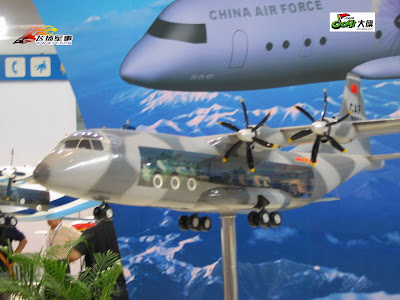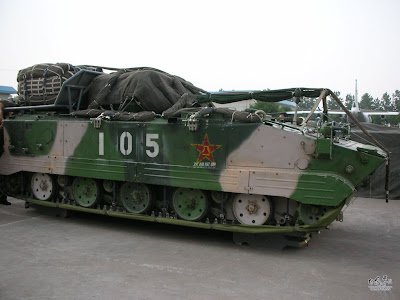Here are the words in Shanfei’s press release and judging from the language used AVIC, Shanfei’s parent company, must be getting hard on them.
大运研制按计划要求正常推进。但 由于任务繁重、研发能力和资源不足,对现场生产组织提出挑战,多项工作进度不同程度滞后;零件生产、部装、总装、试飞等能力未填平补齐,受现场技术质量问 题处理影响,生产不畅,任务不均衡,严重影响产品交付效率;因违反程序、操作规程等原因,多次发生质量、安全事故,安全生产形势严峻
The Y-9 Tactical Transport Aircraft, or YunShuji-9 project, was reported back in 2001 as an enlarged version of the PLA’s workhorse Y-8 transport: a Chinese version of the C-130 Hercules with an airdrop payload capability of 20,000kg or 100 paratroopers. The older Y-8 had a max airdrop payload of 13,200kg. The Y-9 has a built-in RoRo ramp for quick offloads/airdrops. It will also have a max range of 3000km, allowing it to reach most of China from Wuhan—the central city in China and also home to the 15th airborne army. Strategically, this allows the Chinese military a quick reaction to any trouble spot and is one of the reasons why the Y-9 project is so important. Also, it lessens the reliance on Russia for transport aircraft, even though it is not in the same class as the Russian Il-76’s payload of 50,000 to 88,000kg. But the Y-9 is a homegrown and inexpensive solution that is capable of dropping armor such as ZBD03/ZLC2000 Airborne Infantry Fighting Vehicle. The PLA’s order for 36 Il-76s placed in 2005 is still under negotiation.
Now that the project is seriously behind schedule, it will not be surprising to see management changes take place at Shanfei.
Official photo from Shanfei

Y-9 display model and artist impression:


ZBD03/ZLC2000 Airborne Infantry Fighting Vehicle being loaded into an IL-76




Two airborne buggies loaded into an older Y-8

7 comments:
These guys really take their sweet time.....don't they. They have finally decided to make a C-130 equivalent after all this time. The C-130 has been in service for the past 30yrs. I believe what motivates these guys is when a crisis like Tibet and Xinjiang occurs. They then have no choice but to proceed.....and even then it is after the Il-76 purchase has been delayed. Management at Shanfei should have been replaced 5yrs ago.
Can't disagree with you,but breaking the iron-rice-bowl is never easy
the same story goes for america it took then 50 years to make something as reliable as the Kalashnikov 47, yet it still looks like the the 40 year old M-16 product in the end.
To Mr. First Anonymous, isn't the Y-9 supposed to be comparable to the C-130J "Super Hercules" rather than just the C-130.
The Y-8 is probably more similar to the normal C-130...
But you are right, development is extremely slow. Gah.
Well assembled details. Why not try some quality heavy duty digger derricks from online?
Making a military airlifter is never easy. Factors taken into account:-
i) costs - initial built-up costs -
vs.- other more deserving/urgent
projects in the military
ii) whether can be switch to
civilian model without much
modification
iii) durability - expect maybe 30 -
50 years in service
iv) protection - up- to date
counter measures ability -
anti-aircraft missiles are
readily available in black
market
v) Upgradability
vi) costs to operate - speed -vs.-
load & cargo area i.e. to
sacrifice some aerodynamics
vii) stealth?
viii) cargo area suitable for
forseeable future needs -eg
as tankers, type of weapons
LACM, ASM, dumb bombs, on
reconnaissance flights etc
ix) marketability - esp to foreign
countries -vis-a-vis other air-
lifter
x) landed in rough surface or on
metal landing strip
xi) necessary radars even some
airlifter had fitted in the
rear of the craft
xii)and other factors not considered
Strategically, this allows the Chinese military a quick reaction to any trouble spot and is one of the reasons why the Y-9 project is so important. speech recognition program
Post a Comment